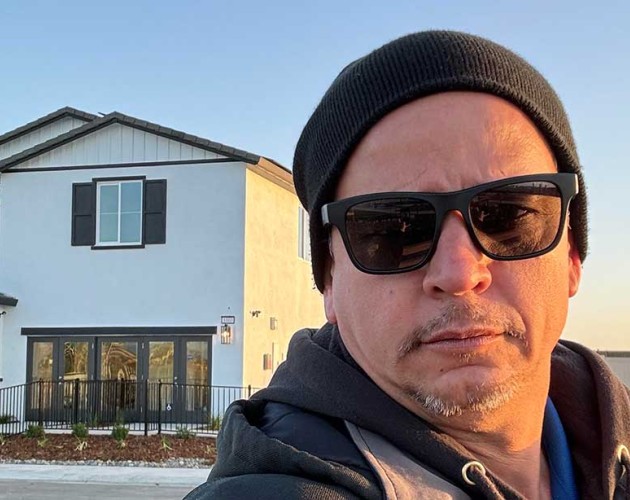Giving Students the Tools to Bring BIM Into Their Projects


As Building Information Modeling (BIM) manager at DPR Construction in Sacramento and leader of the corporate Innovation Group, Kaushal Diwan is heavily invested in implementing new technology into his everyday practice. He brings his extensive knowledge to the Introduction to BIM: Virtual Design and Construction Technology course, where students learn about current technologies and how to implement them into real-world scenarios. While BIM seems to be a relatively recent hot topic in construction conversations, Diwan is quick to point out that the multifaceted program/methodology has been around since the late-’90s.
What does that process look like?
Early in the design process, BIM tools are used for authoring everything from the schematic/conceptual level to construction-level documents. In the design phase, virtual reality and augmented reality tools are also used to help visualize design and concepts so owners understand what they will get when the facility is built. Furthermore, BIM tools are used for validation during construction. They help answer questions such as, “Will this pipe actually fit in the wall where we want it and still give us the aesthetic look and feel of the design?” Depending on the level of modeling, you can even use BIM tools to produce construction cost estimates.
BIM tools can be used for everything from construction logistics planning, visualizing and validating a construction schedule, to using 3-D modeling geometry for layout.
“What the construction industry has learned over the last few decades is that inserting technology or software into an existing workflow will not solve problems all by itself,” Diwan says. “BIM has to be part of the process. You have to plan for it, and the entire team—including the owner—has to be engaged in the process.”
In construction, there are other BIM tools that facilitate the construction process and build on the 3-D models produced during design authoring and coordination. BIM tools can be used for everything from construction logistics planning, visualizing and validating a construction schedule, to using 3-D modeling geometry for layout. You can even take it a step further and utilize detailed construction 3-D models and prefabricate system assemblies where you can gain construction schedule efficiency.
When the project is nearing completion, what has been installed can be updated in the 3-D model, and BIM tools can integrate with Building Management Systems to manage facilities.
McGraw-Hill Construction’s "SmartMarket Report: The Business Value of BIM in North America" shows that BIM usage in the United States will continue to increase with the top-cited benefit of “reduced errors and omissions” in construction.
Do you see an increase in companies incorporating BIM into their process?
There will be increased use of technology to increase efficiency in the construction process. Designers and contractors alike are already using virtual design and construction tools on projects. Other technologies like virtual reality and drones do exist in a limited capacity because the industry is still learning how to best use these tools. However, usage will increase in helping owners and project teams make decisions and this skill set will be in higher demand.
What the construction industry has learned over the last few decades is that inserting technology or software into an existing workflow will not solve problems all by itself.
What tips would you give to a company that is adopting BIM to succeed?
Don’t look at technology as the first solution. This should be the last solution. Take a deeper look at the people and the process, and then figure out which technology is the best solution—not the other way around. Also, realize that each software has its strengths, weaknesses and uses. After you have determined the people and the process part, align your efforts with the right software.
How do you use BIM at DPR Construction and on what types of projects?
DPR has five core markets: health care, higher education, commercial, life science and advanced technology. Regardless of core market type, our ideal project is one that is technically challenging and involves a highly collaborative owner, architect and construction team.
DPR utilizes BIM in almost every aspect of our preconstruction and operations. There is a detailed process to fully evaluate the constraints and challenges of a project before we select the right BIM application, and that is documented through a technology implementation plan that the entire team helps develop. Through critical evaluation, we sometimes learn that BIM may not even be appropriate for the project.
How do you relate this knowledge to your UC Berkeley Extension course?
The constant challenge in academia is to find the right balance, where the information taught in classrooms is relevant to actual industry situations. There are so many aspects to BIM that it is virtually impossible for me to cover it all in one 30-hour course. My approach allows students to learn the basic concepts and terminology, and exposes them to three of the most common BIM tools that they’ll encounter in the design and construction industry. Taking a deep dive into any BIM tool is not always the best approach, as it is one of those skills where if you don’t use it, you will indeed lose it. My curriculum is primarily based on DPR’s industry knowledge and experience and supported by relevant and recent case studies, research papers and articles.
How can your students use this new information in the field?
Though it might take some time to get there, construction technology is almost always a project delivery method and not viewed as just software or information technology. When it comes to hiring, even if there is a large pool of applicants, it can feel like there is a shortage if construction technology skills aren’t the core of an applicant’s skill set. You have to view BIM as a tool. As with a construction toolbox, every tool has its purpose. Individuals who excel in their careers have BIM as one of the “tools” in their “skills toolbox,” which also includes other relevant industry skills.
In addition to working at DPR and being an instructor at UC Extension, Diwan is also a speaker at Autodesk University; other local colleges and universities; and within the Sacramento Architecture, Engineering and Construction (AEC) Community. His project experience includes a 400,000-square-foot health care facility and the new Sacramento International Airport Terminal B.
